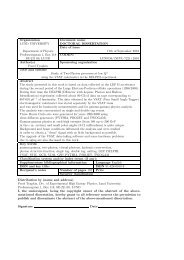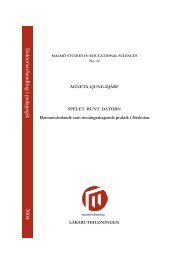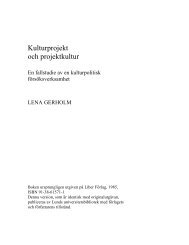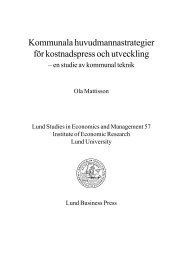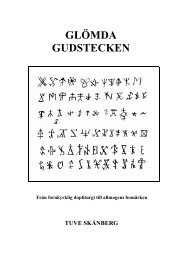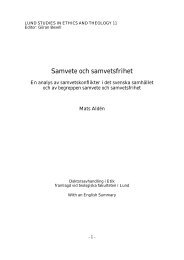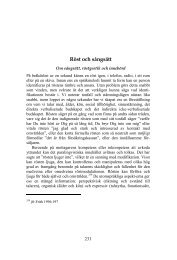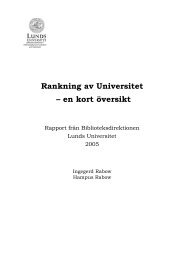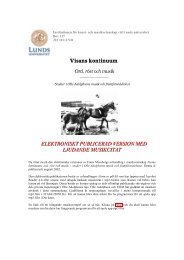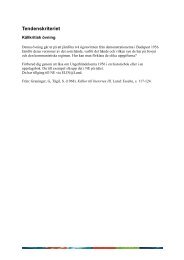Hyperpolarized Nuclei for NMR Imaging and Spectroscopy - Lunds ...
Hyperpolarized Nuclei for NMR Imaging and Spectroscopy - Lunds ...
Hyperpolarized Nuclei for NMR Imaging and Spectroscopy - Lunds ...
Create successful ePaper yourself
Turn your PDF publications into a flip-book with our unique Google optimized e-Paper software.
Bergin et al. 1993). In 1994, the first MR images using hyperpolarized gas<br />
were demonstrated, showing excised mouse lungs filled with 129 Xe (Albert et<br />
al. 1994). The first 3 He images depicting the lungs of a dead guinea pig were<br />
presented in 1995 (Middleton et al. 1995). These initial works were followed<br />
by the first human images using 3 He (Bachert et al. 1996, Ebert et al.<br />
1996, MacFall et al. 1996) <strong>and</strong> 129 Xe (Albert et al. 1996, Mugler et al.<br />
1997). For a review of the historical background of hyperpolarized lung imaging,<br />
see, e.g., Albert <strong>and</strong> Balamore 1998. In Figure 3, examples of lung<br />
images acquired with 1 H, 3 He, <strong>and</strong> 129 Xe are shown.<br />
a b c<br />
Figure 3. Lung MR images: 3D 1 H (a) <strong>and</strong> 3 He (b) images of a guinea pig, acquired<br />
at identical positions, <strong>and</strong> a 2D 129 Xe image of another guinea pig. (Images<br />
from our laboratory.)<br />
The diagnostic potential of hyperpolarized gas imaging was first demonstrated<br />
in studies revealing various ventilation defects in patients, where nonventilated<br />
regions were depicted as signal voids (Kauczor et al. 1996). Rapid<br />
dynamic imaging has also demonstrated the potential to detect abnormal<br />
breathing patterns caused by lung disease (Johnson et al. 1997, Gierada et al.<br />
2000, Salerno et al. 2001a). Owing to the large diffusion coefficient of gases<br />
(especially 3 He), the image intensity will decrease in regions with elevated<br />
mobility of the gas (Chen et al. 1999a, Yablonskiy et al. 2002). By measuring<br />
the apparent diffusion coefficient (ADC), it is thus possible to gain in<strong>for</strong>mation<br />
of pathological lung structure, e.g., in emphysematous lungs<br />
(Saam et al. 2000). From measurements of the T 1 relaxation time, it has<br />
further been possible to calculate the regional oxygen partial pressure pO 2 in<br />
the lungs based on the depolarizing effect of O 2 (see section 2.4.1)<br />
(Deninger et al. 1999, Möller et al. 2001, Deninger et al. 2002). The venti-<br />
20



